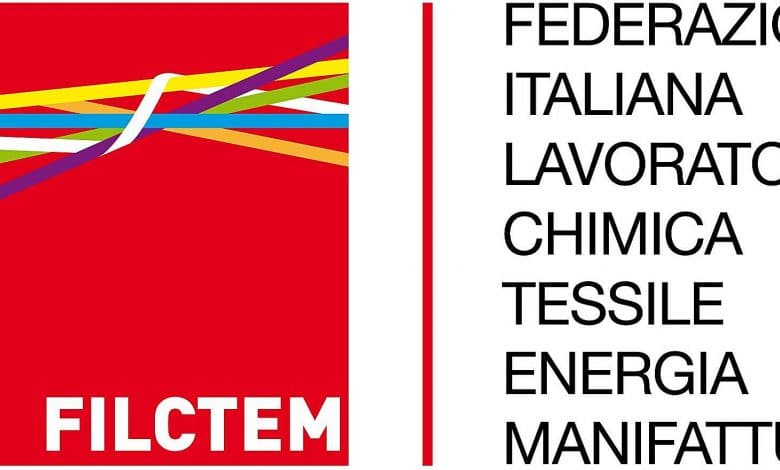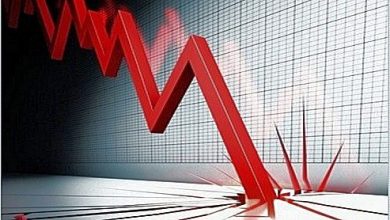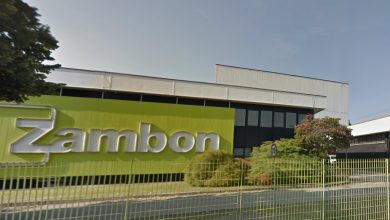
We always talk about an industry that produces, but is not linked to innovation and research. In biotech companies, our region is not at the forefront for the birth and growth of these companies. In exports, drugs make up the lion's share but they are non-biological chemical synthesis drugs, which we import instead
19 November 2015 – sindacale.it review
 “We welcome the commissioner's proposal Valent to create an observatory in which institutions, employers' parties and trade union organizations can periodically meet on one of the strategic sectors of our region, which is the pharmaceutical chemistry. We are available immediately and we invite the commissioner to find the right ways to make it operational ". Thus, in a note, the general secretary of the CGIL of Rome and Lazio Claudio Di Berardino during the conference "The relaunch of industrial policies in the pharmaceutical chemical sector" organized by the regional Filctem CGIL at the Cavour Congress Center. “In Rome and in Lazio – he continues – we don't have the perception of the existence of that real treasure in this sector which are the research centres. It is an extraordinary resource that is not put to good use. We always talk about an industry that produces, but is not linked to innovation and research”.
“We welcome the commissioner's proposal Valent to create an observatory in which institutions, employers' parties and trade union organizations can periodically meet on one of the strategic sectors of our region, which is the pharmaceutical chemistry. We are available immediately and we invite the commissioner to find the right ways to make it operational ". Thus, in a note, the general secretary of the CGIL of Rome and Lazio Claudio Di Berardino during the conference "The relaunch of industrial policies in the pharmaceutical chemical sector" organized by the regional Filctem CGIL at the Cavour Congress Center. “In Rome and in Lazio – he continues – we don't have the perception of the existence of that real treasure in this sector which are the research centres. It is an extraordinary resource that is not put to good use. We always talk about an industry that produces, but is not linked to innovation and research”.
Furthermore, "although it is said that the number of companies registered in Lazio has increased, as far as biotech companies are concerned, our region is not at the forefront for  birth and growth of these companies even if, as we have seen, there is a network of skills, a background that could allow it”. “For a sector like this – he adds – the issue of public spending is very important. And it is important that the public take a step forward, because if the investments don't come from the public, they won't come from private individuals either".
birth and growth of these companies even if, as we have seen, there is a network of skills, a background that could allow it”. “For a sector like this – he adds – the issue of public spending is very important. And it is important that the public take a step forward, because if the investments don't come from the public, they won't come from private individuals either".
“Our region is a major exporter, but we still export around 5% of national GDP. Too little for a region like Lazio. In these exports, drugs take the lion's share but they are non-biological chemical synthesis drugs, which we import instead". ”We have been hearing about reforms for fifteen years – he continues By Bernardino , “I think we need a reform capable of addressing the problem of what type of incentives to offer the sector, incentives capable of supporting research, training and innovative companies. Even within a jumble of measures, we are in the absence of a clear industrial policy. We should ensure that European funds are spent and directed to this sector. This is a challenge for the Lazio Region. I believe that today's initiative will make sense if it leads to joint work with the employers' parties and the institutions to achieve this type of result, in the wake of the pact for development and employment signed by the union with the Lazio Region" .
Lazio: Filctem, the Region promotes conventions on biosciences
November 19, 2015 – trade union review
“ The Lazio chemical-pharmaceutical hub is characterized by the presence of a rich entrepreneurial fabric in the area, articulated in large national and multinational companies and in dynamic and innovative SMEs that place it in second place in importance after Lombardy. It has a strategic value for the economy and development of the Lazio region and in the South Rome-Pomezia-Aprilia-Latina area the presence of the most important national and multinational industries has been a stimulus to the growth of related industries, above all in the use of the most advanced technologies and in achieving excellent quality standards. Added to this in the provinces of Rome, Latina and Frosinone is a consistent and widespread fabric of SMEs with high technological assets, operating in the sectors of medical devices, health biotechnology, agri-food, information technology applied to research and services in medical-health field and pharmaco-genetics. More than 15,000 people work in the Lazio pharmaceutical sector, with another 6,000 in related industries. Pharmaceuticals is the first exporting sector, with a weight of 45% on the total of the Region. Results made possible by the presence of important companies with Italian capital and foreign capital, active in production, research (1,070 employees in R&D), biotechnology, with significant collaborations with the many public poles of excellence, starting with the Istituto Superiore di Sanità . In research, in Lazio, 290 million euros are invested compared to 410 in Lombardy, 240 in Emilia Romagna and 230 in Tuscany. In the region there are 8 universities with scientific faculties, 6 of which are public and 2 private; 13 public research bodies/institutes; 3 European research institutions; 10 important private research centers and the 46.35% of Italian university institutes, clinics and polyclinics". Thus the general secretary of the Filctem Cgil of Rome and Lazio Ilvo Sorrentino in his introductory speech at the conference "The industrial relaunch in the pharmaceutical chemical sector" promoted by the regional category of chemists and held at the Cavour Congress Center.
The Lazio chemical-pharmaceutical hub is characterized by the presence of a rich entrepreneurial fabric in the area, articulated in large national and multinational companies and in dynamic and innovative SMEs that place it in second place in importance after Lombardy. It has a strategic value for the economy and development of the Lazio region and in the South Rome-Pomezia-Aprilia-Latina area the presence of the most important national and multinational industries has been a stimulus to the growth of related industries, above all in the use of the most advanced technologies and in achieving excellent quality standards. Added to this in the provinces of Rome, Latina and Frosinone is a consistent and widespread fabric of SMEs with high technological assets, operating in the sectors of medical devices, health biotechnology, agri-food, information technology applied to research and services in medical-health field and pharmaco-genetics. More than 15,000 people work in the Lazio pharmaceutical sector, with another 6,000 in related industries. Pharmaceuticals is the first exporting sector, with a weight of 45% on the total of the Region. Results made possible by the presence of important companies with Italian capital and foreign capital, active in production, research (1,070 employees in R&D), biotechnology, with significant collaborations with the many public poles of excellence, starting with the Istituto Superiore di Sanità . In research, in Lazio, 290 million euros are invested compared to 410 in Lombardy, 240 in Emilia Romagna and 230 in Tuscany. In the region there are 8 universities with scientific faculties, 6 of which are public and 2 private; 13 public research bodies/institutes; 3 European research institutions; 10 important private research centers and the 46.35% of Italian university institutes, clinics and polyclinics". Thus the general secretary of the Filctem Cgil of Rome and Lazio Ilvo Sorrentino in his introductory speech at the conference "The industrial relaunch in the pharmaceutical chemical sector" promoted by the regional category of chemists and held at the Cavour Congress Center.
“Even if the chemical-pharmaceutical sector remains one of the main productive sectors in Lazio – he continues – the decrease in 2014 data raises many concerns about the ability of companies in the sector to cope with possible future scenarios. The pharmaceutical companies that drive the entire sector will in fact have to face the consequences of the patent expiry of important products and the natural economic loss in favor of the producers of generic drugs. Furthermore, the economic and financial crisis, which does not directly impact the demand for drugs, has accentuated cost containment initiatives by governments and local administrations through greater control of prices and reimbursements".
“Lazio – he adds – has its strength in the production of chemical synthesis drugs (of which it is a net and growing exporter) and its weakness in the production of biological drugs (of which it is a net and growing importer). This positioning presents risks in the medium to long term, because the production of synthetic chemical drugs is more exposed to cost competition, primarily from emerging countries. For this we deem it useful to have a regional convention in the life sciences sector capable of defining a grid of operational proposals and a control room similar to what happens in European clusters. The role of regional public institutions should take the form of four fundamental axes: tax incentives and tax credits on employment, research and development; specific support and funding programs for cluster development for easier access to risky finance, for innovative companies and for innovative activities; a regulatory environment conducive to innovation and innovation networks; the use of technological clusters as integrated tools for territorial development; interventions to catalyze the resources and skills necessary to implement innovative projects, often located along the technological frontier. As regards the type of tax incentives and tax credits, we wonder whether it is possible, for example, to structure a regional system of tax incentives and tax credits in favor of foreign investments where companies are progressively rewarded which, by settling in Lazio or acquiring and/or sharing local companies lead to highly professional employment, income levels higher than the average income in Lazio, investments in research and development laboratories, structured supply agreements with local SMEs, structured agreements with the world of research Lazio. It would be a question of inserting rewarding steps capable of preventing companies from having all the same size of financing, rewarding those capable of giving an innovative impulse to the entire territory”.





